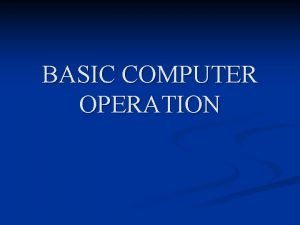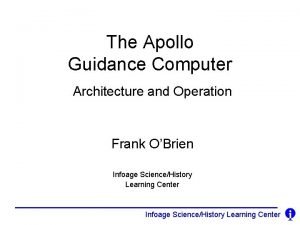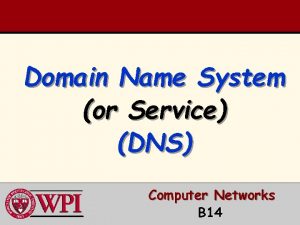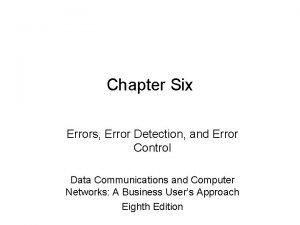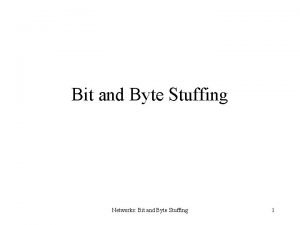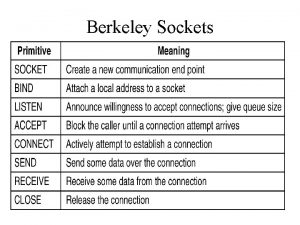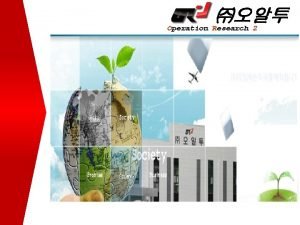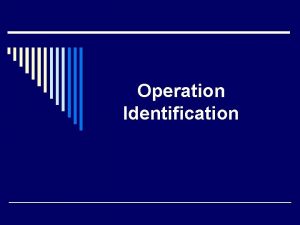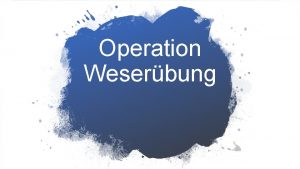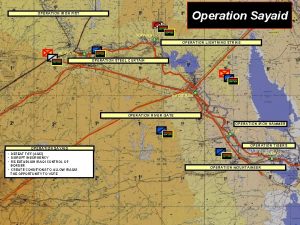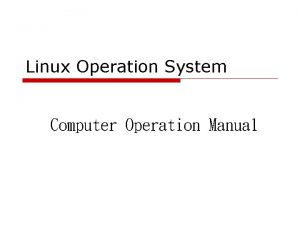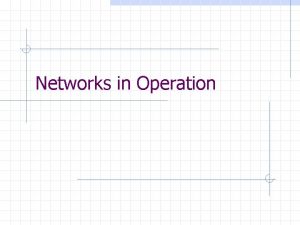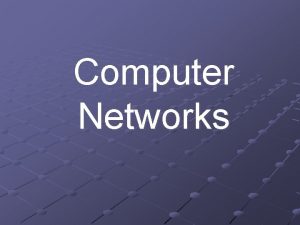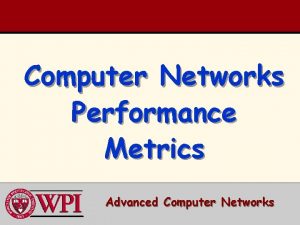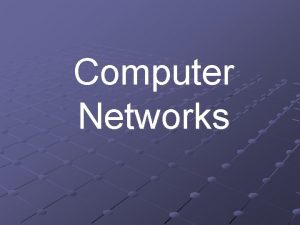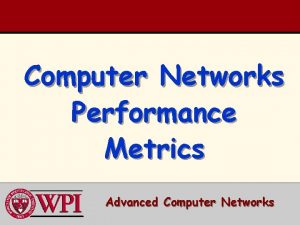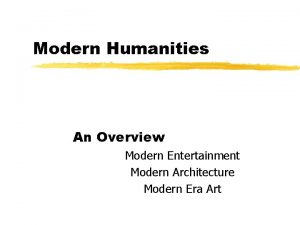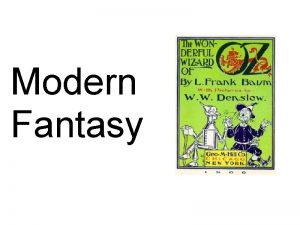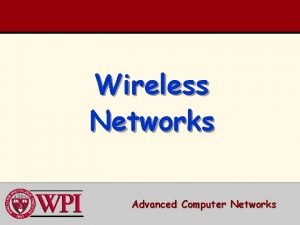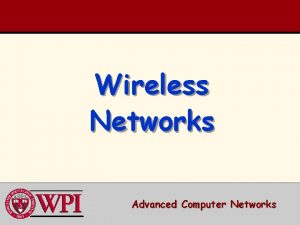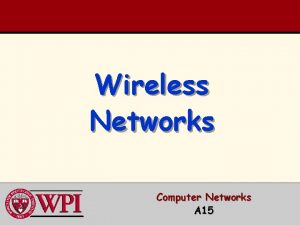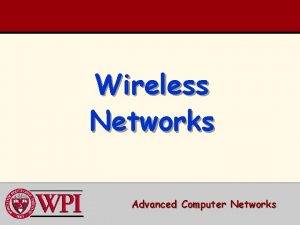Networks L 1 Computer Networks Operation of modern
































- Slides: 32

Networks: L 1 Computer Networks • Operation of modern communication networks highly complex – developed originally from telephone networks – interaction between many disparate systems – an overall coherent structure difficult to find – new subsystems incorporated rapidly as technology develops • Aim here to place components in the context of the overall network – networks traditionally driven by the services they provide e. g. email • Design of networks to achieve these services – essential functions all networks must provide – approaches: message switching, circuit switching and packet switching – development with changing technology and prevailing regulatory and business environment 1

Networks: L 1 • Transport Networks: – road and railway networks enable one basic service » transfer of objects – which in turn enables other services » postal service, passenger transport, freight transport • Communications Networks: – set of equipment and facilities to transfer information between users at different geographical locations » telephone networks, computer networks, broadcast and cable television networks, cellular telephone networks, the Internet etc. – an enabling technology which allows development of a multiplicity of new services, now and in the future » telephone networks enable other services: fax, modem, voice messaging, credit card validation etc. » the Internet provides transfer of information packets and enables services: email, web browsing, e commerce etc. 2

Networks: L 1 – an essential infrastructure of modern society » pervasive in virtually all commercial activities – can be extremely flexible and resilient in use – communications networks work at the speed of light and at very high rates » information can be gathered in very large volumes – exchange of information enables interaction at a distance nearly instantaneously • Radio and television – broadcasting signals simultaneously to all – relatively high quality audio and video expected – delay (seconds or more) can be tolerated even for live events – discontinuous glitches not tolerable – passive users – relatively high rate of information transfer for video 3

Networks: L 1 • Telephone service – “connection oriented” » users must first interact with the network to set up a connection: 1. 2. 3. 4. 5. 6. Telephone Office The caller picks up the phone triggering the flow of current in wires that connect to the telephone office. Telephone Office The current is detected and a dial tone is transmitted by the telephone office to indicate that it is ready to receive the destination number. Telephone Office The caller sends this number by pushing the keys on the telephone set. Each key generates a pair of tones that specify a number. (In the older phone sets the user dials a number which in turn generates a corresponding number of pulses. ) Telephone Office The equipment in the telephone office then uses the telephone network to attempt a connection. If the destination telephone busy, then a busy tone is returned to the caller. If the destination telephone is idle, then ringing signals are sent to both the originating and destination telephones. Telephone Office The ringing signals are discontinued when the destination phone is picked up and communication can then proceed. Telephone Office Either of the users terminate the call by putting down a receiver. 4

Networks: L 1 – real time requirement for normal interaction: delays must be less than 0. 25 s » can be problematic for connections via geostationary satellites – must be a reliable connection i. e. not dropped in middle of conversation – a high degree of availability required i. e. whenever wanted – voice signal quality must be adequate for intelligibility and intonation » but users have been brought up not to expect hi fi – security and privacy desirable – enhanced services: » 0800 free calls » 0845 local charging rate calls » premium rate calls » credit card calls » call return » caller ID » voice mail » etc. 5

Networks: L 1 • Cellular telephone service – mobility of users within an area covered by cells » 98% of UK population coverage typical but not 98% of land area! – radio transmission may imply compromises: » lower voice quality » lower availability » exposure to eavesdropping – system must handle handing off when users move from cell to cell » automatic and transparent to user – providers may permit a roaming service » use of services in another providers country or region » requires agreement on standards e. g. GSM – being developed to provide higher level services: » WAP, GPRS (2½G), 3 G/UMTS 6

Networks: L 1 • Email services – text messages and audio/video attachments to a specific email address – local mail server transmits to a destination mail server across the network – mail applications to retrieve mail from mail server » storage of messages until retrieval by user the most important aspect – not a real time service » relatively large delays can be tolerated – not necessarily connection oriented » a connection does not need to be set up expressly for each message – reliability required » in terms of likelihood of message reaching its destination without errors » possible to request delivery confirmation – security and privacy a concern 7

Networks: L 1 • Web browsing – client/server interaction and use of URLs and HTTP: 1. 2. 3. 4. 5. 6. The user clicks on a link to indicate which document is to be retrieved. The browser must determine the address that contains the document. It does this by sending a query to its local name server. Once the address is known the browser establishes a connection to the specified machine, usually a TCP connection. In order for the connection to be successful, the specified machine must be ready to accept TCP connections. The browser runs a client version of HTTP, which issues a request specifying both the name of the document and the possible document formats it can handle. The machine that contains the requested document runs a server version of HTTP. It reacts to the HTTP request by sending an HTTP response which contains the desired document in the appropriate format. The TCP connection is then closed and the user may view the document. 8

Networks: L 1 • Video on Demand – access to a video “jukebox” at some remote site whenever the user wants – to provide the same controls as a VCR » slow motion, fast forward, reverse, freeze frame, pause etc. – transactions to start the service: » selection from an interactive menu » payment (privacy and security a concern) – server transmits video information frame by frame as required » probably too much information to transfer whole video and store it but becoming possible with large discs » adequate buffering required to avoid jitter – not real time » delay tolerable as long as VCR type controls not severely affected – simpler “batching” of near simultaneous user requests not adequate » VCR controls not possible unless stream of video unique to each user » but saves considerable retransferring of data 9

Networks: L 1 • Streamed audiovisual services – applications such as Real. Player provide features of video on demand – the video stream starts playing as soon as the connection is initiated – limited interactivity – poorer quality than broadcast TV or DVD due to bandwidth limitations • Audio conferencing – exchange of voice signals between multiple users – network must provide group connectivity – interpersonal interaction can be awkward due to lack of visual cues • Video conferencing – seminars, business meetings, remote surgery – avoids expensive travel – high bandwidth required – much delay not tolerable – interpersonal interaction better but not perfect 10

Networks: L 1 Approaches to Network Design • Networks provide connectivity between users through a transmission system – using various types of physical media: wires, cables, radio, optical fibre etc. – the ability to transfer information between source and destination equipment » single blocks or continuous streams t 1 t 0 Network • Cost effective design necessary to meet user requirements – networks usually designed to carry specific types of information – voice, TV, bits, characters etc. 11

Networks: L 1 • a network consists of point to point links interconnected by switches – for a multi hop path, routing decides which path to take at a switch – forwarding actually moves the data in the direction decided • pairwise interconnections would require N*(N 1) lines – hence a central switching access network, and just N access lines – switches placed where it makes economic sense » where there is a community of interest of users wishing to intercommunicate users typically communicate most with other local users, within one switch » but usage pattern changing as cost becoming less dependent on distance distant transfers increasing with distributed communities 12

Networks: L 1 • Connections between local communities use trunks between local switches – multiplexers concentrate the traffic over the more expensive line – demultiplexers separate out the individual parts of the traffic for distribution • Networks are hierarchical: – metropolitan networks interconnect access networks – regional networks connect metropolitan networks – national networks, international networks etc. using backbone networks 1 a 2 3 A b 4 A c d Metropolitan g National 13

Networks: L 1 • Addressing required to identify source and destination end points – hierarchical addressing uses common prefixes for end points in the same geographical areas » facilitates routing » as in a postal address: country, county, town, district, street, number; the Post Office batches mail for countries and for towns, districts, streets etc. – hierarchical addressing in Wide Area Networks e. g. the Internet » also facilitates routing – flat addressing in Local Area Networks e. g. ethernets » adequate for the typically small number of local area end points • Traffic controls necessary to ensure smooth network operation – congestion and overload control mechanisms required – the Internet is resilient in that alternative routes are usually available • Network management required – performance monitoring, detection and recovery from faults, configuration and reconfiguration, accounting information, security etc. 14

Networks: L 1 Function Telegraph Network Telephone Network Internet Basic user Transmission of telegrams Bidirectional, real time transfer of voice signals Datagram and reliable stream service Switching approach Message switching Circuit switching Connectionless packet switching Terminal Telegraph, teletype Telephone, modem Computer Information representatio n Morse, Baudot, ASCII Analogue voice or PCM digital voice Any binary information Transmissio n system Digital over various media Analogue and digital over various media Digital over various media Addressing Geographical addresses Hierarchical numbering plan Hierarchical address space Routing Manual routing Route selected during call setup Each packet routed independently 15

Networks: L 1 Evolution of telecommunications capacity DWDM SONET OC 48 T 4 carrier T 1 carrier Baudot multiplexer Printing telegraph 16

Networks: L 1 • Telegraph networks and Message switching – a telegram service using Morse coded text – a digital transmission system » dots and dashes efficiently coded depending on usage frequency – human operators at intermediate telegraph stations stored incoming messages, chose the route of the next hop and forwarded them on – 25 30 words per minute for a good operator » equivalent to about 20 bits per second – Baudot multiplexing interleaved characters from several operators onto one line » equivalent to about 120 bits per second – led to ASCII code and teletype terminals for automatic transmit and receive – frequency multiplexing » uses sinusoidal pulses of differing frequencies over one line » one frequency to represent a “ 0”, another to represent “ 1” » use multiple pairs of frequencies for multiplexing several messages 17

Networks: L 1 • Telephone networks – Alexander Graham Bell (born in Charlotte Square, Edinburgh) – analogue signal voice transmission – switching by means of human operators and patch cord panels » caller requests connection to destination by speaking to operator » operator makes patch cord connections – connection-oriented circuit switching » routing decisions made at call setup time » no additional addressing information needed during call – dedicated end to end connection maintained for the duration of the call 18

Networks: L 1 – gradual transition to today’s all digital transmission and computer technology – pulse code modulation (PCM) converts analogue to digital » one voice channel : 64 Kbps – T 1 digital transmission system (USA), first deployed 1962 » to carry voice traffic between Central Offices » multiplexed 24 voice calls at 1. 5 Mbps – original analogue switches required intermediate D to A and A to D converters » development of digital switches avoided this » only converted back to analogue for the “final mile” to end user – hierarchical networks: » Central Office access networks connected to Tandem Switches » Tandem Switches to Toll Switches – multiplexing onto higher speed lines: » T 2 : 96 voice channels at 6. 3 Mbps » T 3 : 672 voice channels at 44. 7 Mbps » T 4 : 4032 voice channels at 274 Mbps 19

Networks: L 1 Toll Tandem CO CO CO • European hierarchy similar: – E 1 : 30 channels : 2. 048 Mbps, up to – E 5 : 7680 channels : 565 Mbps • Dense Wave Division Multiplexed optical fibre systems: – basic 2. 5 Gbps and 40 Gbps optical channels now multiplexed to Terabyte rates 20

Networks: L 1 • The Internet and Packet Switching – the Internet Protocol (IP) provides for transmission of information across multiple, possibly dissimilar, networks – IP (and TCP) emerged from ARPANET in 1960’s and 1970’s – motivated by multi access time sharing systems » characterised by short bursts of interaction from multiple users of the system » line sharing possible using multi-drop lines : Poll to terminal C Response from terminal T T » or statistical multiplexing encapsulating messages with source address: Host Mux Address Info . . . T T T 21

Networks: L 1 – interactive systems require short transit times for good interaction » need to impose a limit on the size of messages to the system » long messages might hold up interactive users – packet switching addresses this problem – connectionless or datagram packet transfer: » each packet routed independently of all other packets » as used in ARPANET and the Internet – alternative is virtual circuit packet transfer » a route set up through switches and links in the network » all subsequent packets forwarded along the same path used by Asynchronous Transfer Mode (ATM) networks – an Arpanet packet consisted of: » a header containing a destination address » a data part, up to 1000 bits longs – packet switches from BBN (Bolt, Beranek and Newman) » interconnected by 56 Kbps lines 22

Networks: L 1 AMES Mc. CLELLAN UTAH BOULDER GWC – Arpanet in 1972: CASE RADC ILL CARN LINC USC AMES MITRE UCSB STAN SCD ETAC UCLA RAND TINKER BBN HARV NBS – each node was a packet switch which » maintained a routing table specifying the output line for each destination used a distributed route synthesis algorithm, exchanging information with neighbouring nodes resilient to network failure » contained buffers to hold packets until the line became available » multiplexed packets from different users onto the links » no prior allocation of bandwidth or buffering for any user » end to end flow control used to limit buffering requirements » no need for switches to keep state information about users or packet flows 23

Networks: L 1 – an internetwork involves the interconnection of multiple networks: net 1 G net 3 G G = gateway G G net 2 net 5 G net 4 G – the Internet Protocol (IP) was developed to provide connectionless transfer of packets across an internet – the component networks are interconnected by packets switches called gateways or routers, which direct the transfer of packets – the underlying networks are responsible for transferring packets between routers 24

Networks: L 1 – IP provides a best-effort service: » does its best but takes no additional action when packets are lost, corrupted, delivered out of order or misdirected » an unreliable service to avoid complexity » reliability can be achieved by embedding IP packets in higher level protocols e. g. the TCP protocol but more costly in time and bandwidth – IP uses a limited hierarchical address space that has location information embedded in the structure » (in IPv 4) address consists of 32 bits e. g. 129. 215. 58. 7 address 7 on the 129. 215. 58. 0 sub network » allows routers to handle addresses with same prefix in the same manner – the DNS (Domain Name System) provides more user friendly textual equivalents » e. g. heriot. dcs. ed. ac. uk » translation to IP addresses provided by DNS servers 25

Networks: L 1 • the Transmission Control Protocol (TCP) – operates in a pair of end hosts across an IP internet – provides reliable transmission of a stream of information » organises retransmission when packets in error – packets provided in the correct order – includes a mechanism for flow control when congestion occurs – complexity of TCP relegated to edges of the network – Quality of Service (Qo. S) issues remain » e. g. guaranteed bandwidth, latency etc. • ATM networks developed to address Qo. S issues – allows negotiation between user and network for: » packet loss ratio i. e. proportion of packets lost » packet transfer delay, including propagation delay, queuing delays etc » packet delay variation – effectively a guaranteed bandwidth can be negotiated 26

Networks: L 1 Factors in Communication Network Evolution • Technology, Regulation, Markets, Standards Technology Will it inter-operate? Can it be built? Standards Is it allowed? Will it sell? Regulation Market – availability of a technology does not mean it will sell – never very clear beforehand whether a market exists for a product or service – the move away from monopoly telecomms suppliers makes standards essential 27

Networks: L 1 • Technology – sustained improvements in technology » microprocessor MIPs, RAM memory size and speed, hard disc capacities » operating systems, application software » digital signal processing (DSP), audio, image and video compression » transmission bandwidth » network protocols Cumulative Experience Professional Manager Entrepreneur Technical Expert Time 28

Networks: L 1 – multiple technologies overlap » e. g. copper wire, coaxial cable, optical fibre – from 24 voice channels on T 1 to millions of channels on DWDM fibre now – Moores Law of computer processing power (doubling every 18 months) applies even more strongly to transmission technologies – technological advance does not happen by chance » thousands of engineers and scientists beavering away 29

Networks: L 1 • Regulation – telecomms services have always been government regulated » until very recently as state monopolies – deregulation and privatisation of monopolies » more competition in long distance telecomms » cable television and satellite broadcasting competition to terrestrial – radio spectrum allocation » has always been closely controlled nationally and internationally » cellular telephone frequencies, 900 MHz and 1800 MHz allocations » unregulated bands for low power use in 2. 4 GHz range » 3 G spectrum auctions – Office of Telecommunications (Oftel) in the UK » promoting consumer interest » maintaining effective competition » ensuring services to meet all reasonable demands e. g. emergency services, directory information, rural services etc. 30

Networks: L 1 • Market – new applications and services » fax, email, web browsing » desktop computing, word processing, multimedia, video games » mobile phones, PDAs 1 G and 2 G services mushroomed, 3 G slow to arrive » e commerce e. g. on line shopping, on line travel booking etc. – entrepreneurs always searching for the “Killer App” » SMS messaging on mobile phones a success » WAP a failure – usefulness of a service often depends on there being a critical mass of subscribers e. g. email, SMS – economies of scale often vital to sustain services and develop new ones » cable and satellite TV » mobile phones 31

Networks: L 1 • Standards – agreements, industrywide, with national and international scope – allow interoperability of equipment made by different vendors » competition reduces prices – physical standards such as plugs and sockets e. g. USB – usage standards such as communications protocols » whether implemented by software or hardware – can arise initially as de facto standards from a successful product » e. g. ethernet » internationally standardised later – or developed by subcommittees of standards bodies » American Standards Committee for Information Exchange (ASCII) » Institute for Electrical and Electronics Engineers (IEEE) » International Telecommunications Union (ITU) » International Standards Organisation (ISO) 32
 Datagram networks and virtual circuit networks
Datagram networks and virtual circuit networks Backbone networks in computer networks
Backbone networks in computer networks Basic computer operation
Basic computer operation Apollo guidance computer manual
Apollo guidance computer manual Crc in computer networks
Crc in computer networks Crc in computer networks
Crc in computer networks Traffic management in computer networks
Traffic management in computer networks Speed of a computer
Speed of a computer What is optimality principle in computer networks
What is optimality principle in computer networks Snmp ports
Snmp ports What is optimality principle in computer networks
What is optimality principle in computer networks Uses of computer network in business application
Uses of computer network in business application Definition of computer
Definition of computer Intro dns
Intro dns Integrated services vs differentiated services
Integrated services vs differentiated services Icmp in computer networks
Icmp in computer networks Web and http in computer networks
Web and http in computer networks Framing in computer network
Framing in computer network Dns in computer networks
Dns in computer networks Computer networks assignment
Computer networks assignment Computer networks vs distributed systems
Computer networks vs distributed systems Badrinath
Badrinath Error detection computer networks
Error detection computer networks Error detection in computer networks
Error detection in computer networks Internet transport protocol in computer networks
Internet transport protocol in computer networks Error control in computer networks
Error control in computer networks What is optimality principle in computer networks
What is optimality principle in computer networks Switching in data link layer
Switching in data link layer Explain the concept of layered task
Explain the concept of layered task Byte stuffing in computer networks
Byte stuffing in computer networks Bit stuffing and byte stuffing in computer networks
Bit stuffing and byte stuffing in computer networks Bit stuffing in computer networks
Bit stuffing in computer networks Berkeley sockets
Berkeley sockets


